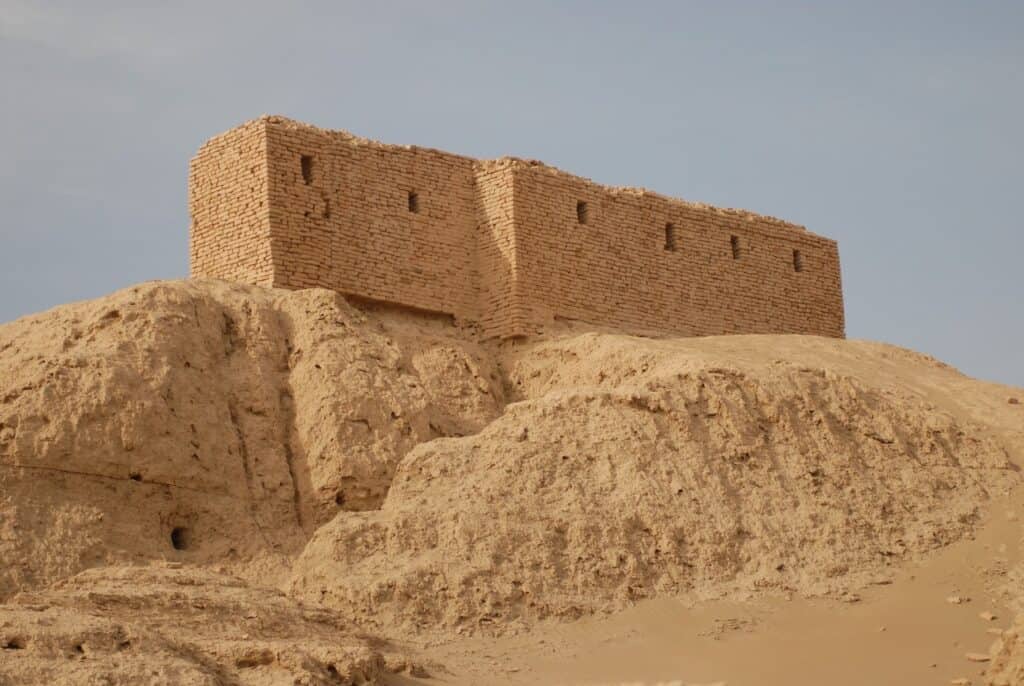Table of Contents
Mount Ekur, often referred to as “Ekur” (meaning “House Mountain” or “Mountain House”), holds a prominent place in Sumerian mythology and religious practices. Here’s a detailed account of what is known about Mount Ekur.
Mythological and Religious Significance
Enlil’s Abode: Ekur was considered the divine dwelling place of Enlil, one of the chief deities in the Sumerian pantheon. Enlil was the god of air, wind, and storms, and he played a central role in Sumerian cosmology as the king of the gods and the ruler of the cosmos. Ekur, as Enlil’s sanctuary, was viewed as the most sacred mountain, a cosmic axis connecting heaven and earth.
Cosmic Mountain: In Sumerian cosmology, mountains often represented the meeting point between the divine and the earthly realms. Ekur was envisioned as a cosmic mountain where the gods descended to interact with humanity and where the divine powers of creation and order emanated.
Ekur as a Temple
Ekur Temple in Nippur: The term “Ekur” is also the name of the temple dedicated to Enlil in the city of Nippur, which was one of the most important religious centers in ancient Mesopotamia. The Ekur temple was not only a place of worship but also a symbol of Enlil’s power and authority over both the gods and the earthly kings.

Architectural Symbolism: The temple itself was designed to reflect the idea of a mountain. Temples in Mesopotamia were often constructed as ziggurats, which are terraced, pyramid-like structures meant to represent mountains. The Ekur temple, therefore, embodied both a literal and symbolic mountain, reinforcing the idea that it was a bridge between the divine and mortal worlds.
The Ekur complex was a significant religious and architectural structure that included shrines, storehouses, and various other facilities. It housed shrines dedicated to Enlil, his wife Ninlil, their sons Nanna and Ninurta, and other deities like Nuska and Suzianna. The complex featured an assembly hall, a hut for ploughs, a lofty stairway, and various gates with symbolic names like the “gate of peace” and “gate of judgment.” There were also drainage channels and a multi-story structure called a “giguna.”
The Ekur was known for inspiring fear and was associated with a primordial dungeon or “house of lament” where the wicked were judged and punished. The goddess Nungal, called the “Queen of the Ekur,” oversaw this dark side of the complex, which included a “River of ordeal” leading to the “mouth of catastrophe.” The complex also had a “house of life,” where sinners could be rehabilitated.
The Ekur suffered destruction multiple times, notably by Sargon the Great and later during Gutian raids. However, it was repeatedly restored, with significant rebuilding efforts by rulers like Naram-Sin, Ur-Nammu, Ishme-Dagan, and Esarhaddon. The complex also featured a prominent tree in its courtyard, reminiscent of the tree of life, symbolizing both king and god.
Ekur in Sumerian Literature
The Enlil Hymns: Numerous Sumerian hymns and prayers praise Ekur as the mighty abode of Enlil. These texts often describe the temple-mountain as awe-inspiring, with its grandeur reflecting the power of the god who resided there.
The Epic of Enmerkar and the Lord of Aratta: Ekur is mentioned in various myths, including the epic that narrates the conflict between the Sumerian king Enmerkar and the distant, mountainous land of Aratta. In these myths, Ekur’s significance is reinforced as it symbolizes the divine legitimacy of kingship and authority granted by Enlil.
Cultural and Symbolic Aspects
Symbol of Divine Authority: Ekur was not just a religious site but also a symbol of the divine mandate. Sumerian kings often sought the blessings of Enlil at Ekur to legitimize their rule and gain divine favor in their military and political endeavors.
Role in Creation Myths: Some Sumerian texts suggest that Ekur played a role in the creation myths, where Enlil, residing in Ekur, organized the cosmos, separating the heavens from the earth and establishing order in the world.
Legacy
Influence on Later Cultures: The concept of a sacred mountain or temple-mountain persisted in later Mesopotamian religions and even influenced the architecture and religious practices of subsequent civilizations, such as the Akkadians, Babylonians, and Assyrians.
Mount Ekur, therefore, is much more than a geographical feature; it is a central symbol in Sumerian religion, representing divine authority, cosmic order, and the interaction between gods and humans. It served both as a literal place of worship and a powerful metaphor for the spiritual and political life of ancient Sumer.
